Lab-grown materials form fashion and furniture for Vivorium lifestyle concept
New York designer Ali Schachtschneider has imagined a future in which biologically grown materials are used to create furniture, garments and tools that would become "extensions of the body".
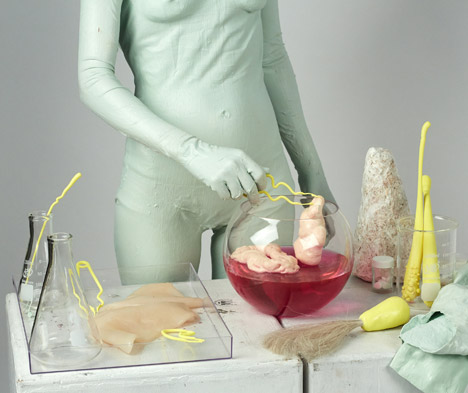
The Vivorium project compiles speculative uses for lab-grown materials such as mycelium, cellulose and tissue cultures.
"The project aims to provoke new alternative ways to perceive our bodies in relation to objects and fashion," Schachtschneider told Dezeen.
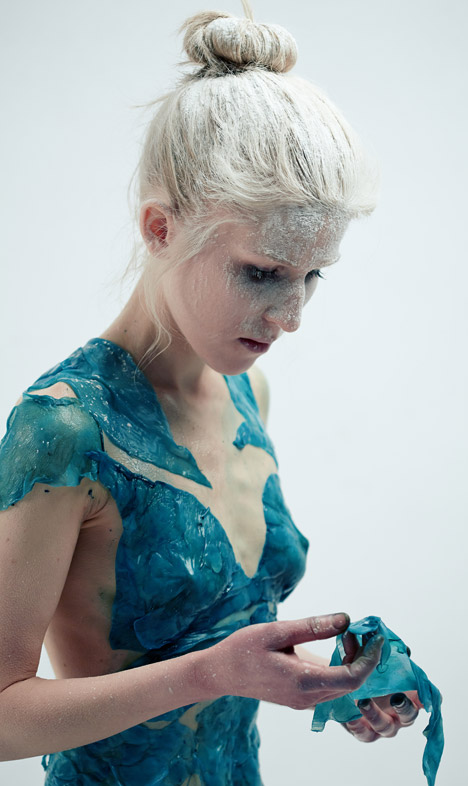
The designer conceived five collections of objects that could be made with these materials.
Items in the first collection are called Extensions, as they are designed to "extend the body's abilities".
They include Glovextensions, which would extend from the hands to cover and protect varying amounts of the body, and cosmetic explants: tissue cultures that could be added to the body to alter its shape.
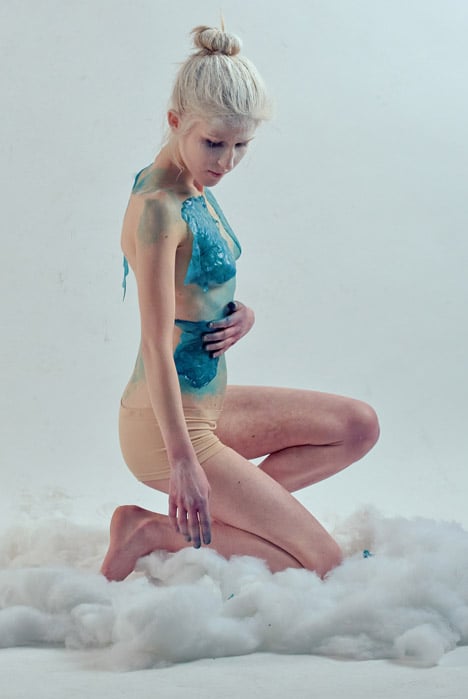
The Olfactorxtender is a small device that fits into the nose. Filled with genetically modified bacteria that produce the smell of bananas, the device would be worn to mask unpleasant odours.
A pill named Cellubiotic Ingestulose would add a bacteria to a consumer's body that produces cellulose – a naturally occurring sugar – and emits it from the pores of skin. The bacteria would react to various body outputs, such as heart rate and breathing patterns, and produce different colours when these fluctuate. "It serves as a visual indication of stress levels, with colour varying in relation to stress," said Schachtschneider.
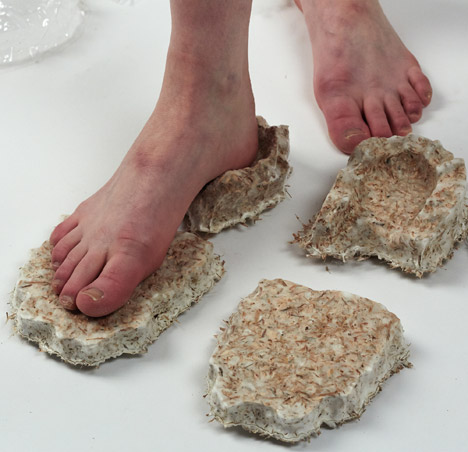
Her Interiorobjects for the home include a stool grown from mycelium – the thread-like vegetative part of a fungus. She imagines the material would develop into a wood-like material by fusing over time.
Mycelium also forms the basis for her fungal footwear, part of the Garmentobjects collection of wearable pieces that are designed for both practical use and display.
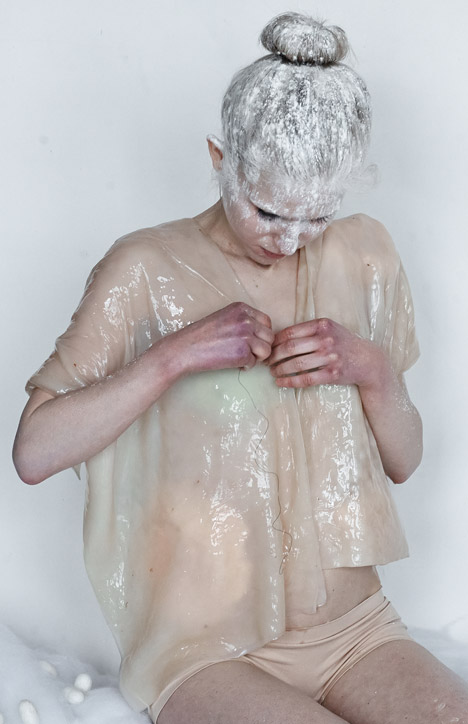
Also among the Garmentobjects is the Wetgarment, made from sheets of grown cellulose material that are placed on the body and allowed to dry for seven days while the wearer remains still. "It develops a strong connection between the body, material and resulting wearable," said Schachtschneider.
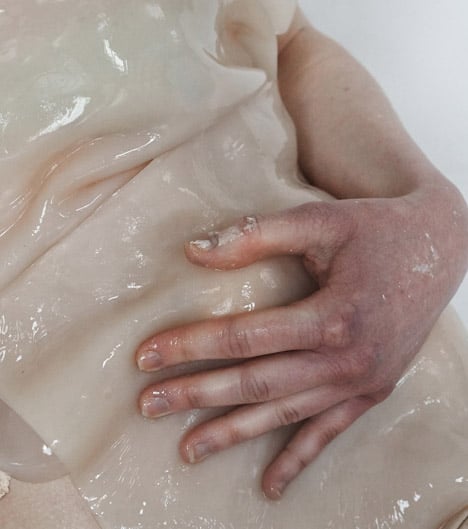
During another ritual-like process – called Edibleskins, Ediblematter – a wearable second-skin would be grown via tissue culture, worn, then eaten as part of a special meal with guests.
The Toolcollection contains implements that could be used to facilitate these growth processes. "It includes seven tools for brushing, stirring and picking up small objects, as well as a pair of magnifying spectacles to alter vision," the designer said.
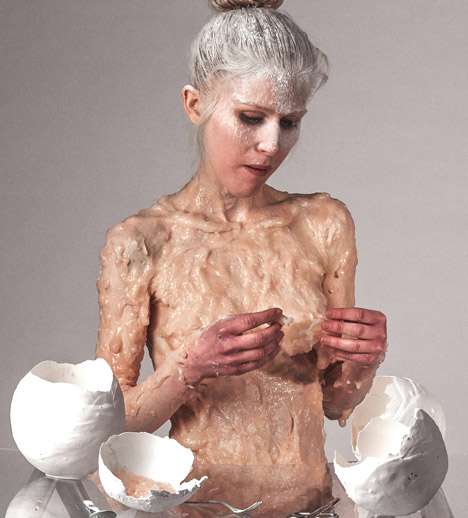
Finally, she also envisaged a range of future foods called Nourishments, Eatables that would provide enough nutrients to sustain the body's activities.
Schachtschneider created a book containing a narrative that accompanies the objects, explaining how they would be used. As part of the project, she experimented with the materials to gauge their potential functions and limitations before proposing the range of objects for Vivorium.
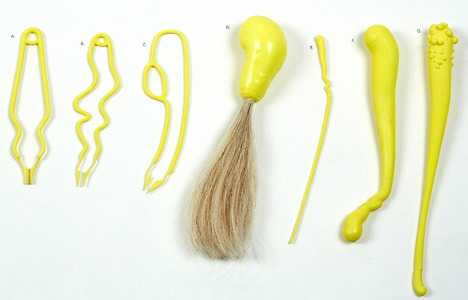
"The process involved extensive research and experimentation, growing materials in the lab," she said. "This research was then used to creatively rethink the way we interact with the objects around us."
Photography is by Hiu Zhi Wei.